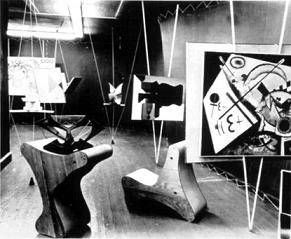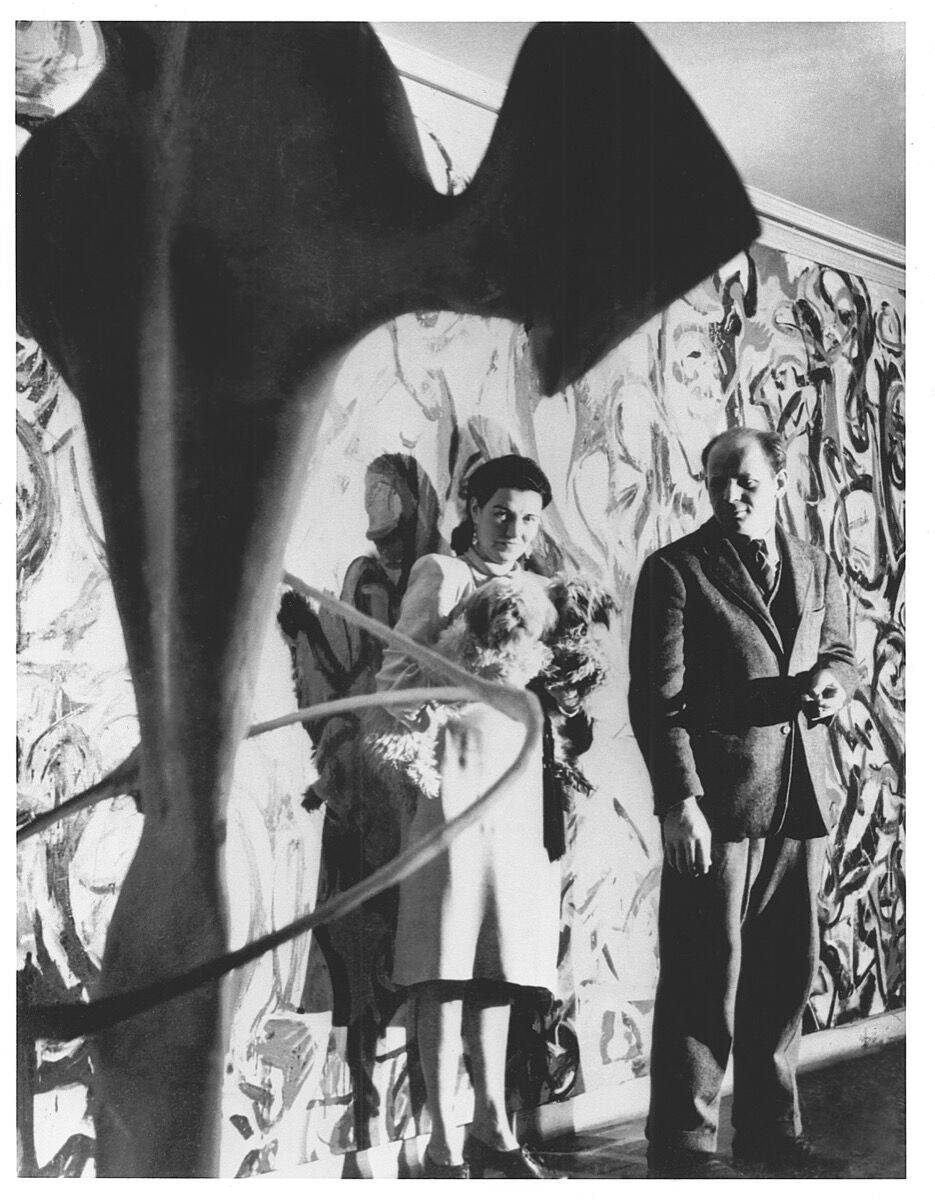Once upon a time, there was a girl called Peggy Guggenheim
who lived in New York. Her dad had just died in a tragic accident on a ship
called the Titanic. He left his daughter a lot of money which made her very
wealthy. But Peggy wasn’t interested in living a life of luxury surrounded by
riches. Instead, she wanted to be around the exciting new art movements that
were popping up all over Europe.
So, when she was twenty she moved to Paris where lots of
young artists, musicians and writers were living. If you were interested in
art, it was the place to be! Sure enough, Peggy met and became friends with
lots of artists. Some of these friends would go on to be very famous, such as
Man Ray and Marcel Duchamp.
 |
| Add caption |
After spending so much time with all of these artists, Peggy
became a real expert on the new art being made in Europe. She knew that if she
opened a gallery and showed the art she liked, people would want to come visit
and see what Peggy had to say about what was important in the art world.
In 1938, she opened her first gallery of modern art in
London. She showed a lot of artwork by her friends. Lots of people visited and
were excited by what they saw. Everything in Peggy’s gallery was special. This
was one of the first galleries to show modern art in London. It was so
different from everything they had seen before. For example, she let Vasily
Kandinsky have his first show at her gallery, and people were amazed! He used
lots of shapes and splodges of paint and clashing, bright colours. Peggy showed
London: this is art now.
 |
| White Cross, Vasily Kandinsky, 1922. |
After her success in London, she decided to start a museum instead, this time in Paris. The difference between a gallery and a museum was important because modern art was very new and revolutionary, and often quite shocking. Putting it in a museum would make it seem historical and like it wasn’t just a passing craze, it was there to stay. This ‘modern museum’ idea was one of the first of its kind.
She knew that her name had to be associated with an
incredible collection for people to take her seriously as a gallery or museum
owner. She needed to have lots and lots of artworks to show everyone. She
decided to buy a painting every single day.
In 1938, World War Two broke out. The Nazis were killing
Jews in Germany, and as a Jewish woman, Peggy was afraid. Even though she was
scared, she wanted to stay in Europe as long as she could so that she could buy
some of the amazing artworks that were being made there. She stayed in Paris
right up until the Germans were approaching, just so that she could seal a deal
she was working on with Brancusi.
 |
| Inside the Art of This Century gallery, 1943. |
Finally, Peggy had to flea from Paris and went to New York. There,
she opened a new gallery called Art of This Century. The gallery was beautifully
designed, and was made to be just as new and modern as the artworks to be
displayed there.
She began to help the careers of American artists, just like
she had helped the European ones. Among them was Jackson Pollock. She
commissioned his largest ever painting which was 6 metres long!
 |
| Peggy, Peggy's dogs, and Jackson Pollock in front of his 6 metre long Mural, 1943. |
Pollock and his friends had just begun a new art movement
called the American Abstract Expressionists. They were mainly interested in
colour. It was really shocking to a lot of people because it didn’t look like
the art they were used to. There were no faces or people, just lots of shapes
and lots and lots of colour. Peggy was one of their biggest supporters and gave
the group some of their first gallery shows. It would go on to become one of
the most important American art movements ever, and Peggy was really to thank.
 |
| The Peggy Guggenheim Collection in Venice today. |
After the war, she could finally return to Europe and she opened a gallery in Venice. This time
in the beautiful Palazzo Venier dei Leoni. It was a very very old palace, right
on the canal, with water lapping at its sides. It was a gleaming white colour
and could be seen by all the boats passing by. Peggy filled it with modern art
by Picasso, Magritte, Pollock and Kandinsky. This was the very old building
being given new life by this modern art. She gave the American artists their
first ever shows in Europe. People all over Europe were shocked
and inspired by this new wave of modernism.
By the 1960s, her collections were so impressive that she
loaned them out across the world. Her name became associated with some of the
most famous artists and artistic movements of the century.
Peggy was known all over the world. Just like the exciting artworks
she promoted, she wore really bright colours, huge coats and weirdly shaped
glasses, designed by artists who wanted her to wear their artwork. She was
always followed around by her two little dogs.
 |
| Peggy said she was in love with Venice. |
She loved living in Venice and called the beautiful city a
‘living work of art.’ She lived there until her death at the age of 81 and was
buried next to her beloved dogs.
The Peggy Guggenheim Collection in Venice is still one of
the greatest museums of modern art in the world.
You May Also Like...
Women of Art History: Faith



I love this Hudi. This is the first one I've read but if they are all like this they need to be compiled into a book for children. (I'd like one for Adiele's Bat Mitzva present so you have until December 2020 to make that happen. :~p )
ReplyDeleteThank you!! Yeah would love to make them into a book one day, that would be so cool <3
Delete